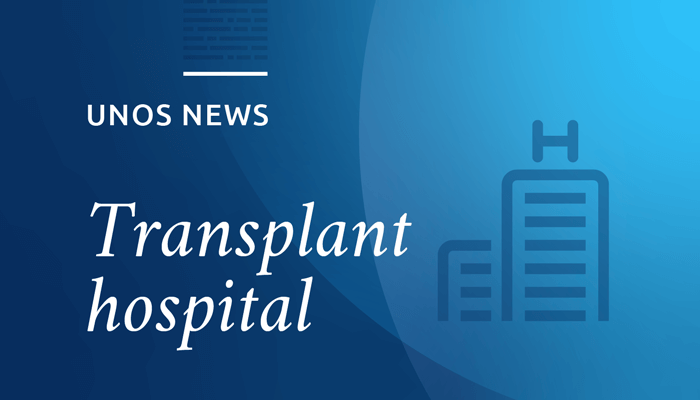Many transplant professionals say a key challenge to increasing organ utilization is to establish more clinically relevant measures of their program’s outcomes. While accepting donors or candidates with somewhat greater risk factors may not in fact trigger additional program review based on statistical thresholds, some clinicians remain concerned about their potential impact. Studies suggest that hundreds of potentially transplantable kidneys are discarded each year, or never even recovered for transplant, partially due to such concerns.
To address these issues and encourage greater use of transplantable organs, various initiatives are underway to encourage clinicians to accept additional risk while providing a more balanced approach to outcome monitoring and review.
At its October 2016 meeting, the OPTN/UNOS Membership and Professional Standards Committee (MPSC) adopted a new operational rule for outcomes review of kidney transplant programs with lower-than-expected graft and/or patient survival. The rule will be implemented beginning with the MPSC’s review of SRTR program reports issued in June 2017.
Previously, the MPSC reviewed all programs falling outside a threshold established in the OPTN bylaws, without differentiating for donors and patients with increased risk characteristics. Now the committee will only review programs with outcomes meeting the established criteria both for all kidney transplants performed, as well as for those transplants not involving “higher risk” circumstances. (A higher risk transplant is one involving a recipient with an EPTS score greater than 80, using a kidney from a donor with a KDPI of 85 or greater). In other words, the committee will not review kidney programs for outcomes if the only reason they did not meet the expected threshold was the inclusion of higher risk transplants.
“We hope this change to the outcomes review process will reassure programs that use of high KDPI kidneys for high EPTS recipients will not increase their risk under the MPSC outcomes review process,” said MPSC chair Jeff Orlowski, M.S., CPTC. “By providing a secondary review of any program’s outcomes with these higher risk transplants removed, we hope programs will consider performing these transplants when they believe their recipient will benefit. In this way, we hope that ultimately more kidneys that currently are discarded will be used to help patients who may otherwise do poorly awaiting a transplant.”
This initiative stemmed from discussions held by the leadership of the American Society of Transplant Surgeons, American Society of Transplantation, Association of Organ Procurement Organizations and UNOS, with the goal of removing disincentives to transplantation. Their recommendations were then considered by an MPSC work group formed to develop actionable proposals.
The work group focused initially on kidney transplantation due to the ready availability of data on donor and candidate risk factors. It also determined that adjusting the process for outcomes review would be quicker and easier to implement than changes to allocation policy.
In evaluating the proposed change prior to public comment, using a cohort of data from the June 2015 program-specific reports, the MPSC estimated that about four percent of kidney transplants would be excluded from evaluation, and six transplant programs that would have met existing criteria for outcomes review would not have been flagged under the proposed operational rule. As the rule takes effect, the committee expects that more high-KDPI kidneys may be used as more transplant programs realize these outcomes won’t contribute as greatly to their overall review threshold.
The MPSC plans to use this operational definition for three years and will review the results to determine whether it should continue as written or should be adjusted. “We will also be taking what we learn from this process change to evaluate opportunities for similar adjustments to outcomes review for other organ systems such as the heart or the liver,” said Orlowski.
Orlowski noted that the new review process is similar to other initiatives under way to increase transplants through encouraging higher organ utilization. The COIIN (Collaborative Innovation and Improvement Network) project is now into its first pilot phase. “Hopefully, this change will be complimentary to the other initiatives such as COIIN,” he added, “and will help create an overall tone of innovation and better utilization of organs nationally.”

